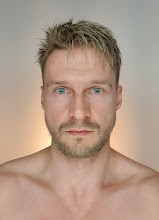 Good Evening. Today I will tell you about The FIRST Czech Artist (by all means) as William Hogarth as the Firts Painter in England - ALFONSE MUCHA.
Good Evening. Today I will tell you about The FIRST Czech Artist (by all means) as William Hogarth as the Firts Painter in England - ALFONSE MUCHA.
Alphonse Mucha with his decorative posters has become a kind of trademark and synonym for the Art Nouveau movement. In the sixties his poster reproductions had a revival and were popular again among the flower-power and hippie generation.
Alfons Maria Mucha was born in Ivancice, a small provincial town in the Czech Republic.
He started his artistic career as an autodidact.
Alfons Mucha had a vocational training in stage decorations in Vienna from 1879 to 1881. In the evening he attended a class in drawing. After a few occasional commissions for decorative paintings, he went to Munich in Southern
Bavaria. Here he studied at the Munich Academy of Fine Arts from 1885 to 1887.
After Munich, Mucha moved to the "mecca" of arts, Paris. Here he studied with different teachers. He lived in modest conditions and could survive with small commissions for book and newspaper illustrations. For a short period he shared a studio with Paul Gauguin.
Mucha had developed his own personal style-
characterized by art nouveau elements, tender colors and byzantine decorative elements.
And all these elements were ranked around images of fairy like young women with long hair and
splendid, refined costumes. In the coming years, this type of female images should become his trademark. Mucha used lithography as the printing technique for his posters.
The posters are usually signed in the block. Some of his posters were produced as sets like The Four Seasons. Complete sets count among the most searched for of his works.
In 1890 the artist had his first one man show in Paris with 448 works on display. His art work was not confined to the printing media.
He designed tissues, stamps and even bank bills. In 1900 he received a commission by the Austrian
government to decorate the Austrian pavilion for the World Fair in Paris of 1900. He became also
government to decorate the Austrian pavilion for the World Fair in Paris of 1900. He became also
active in designing jewelry.
In the first two decades of the XX-th century Mucha traveled frequently to the United States.
He took commissions in the US and taught art at art academies in New York and Chicago.
In 1939 the German Nazis occupied Czechoslovakia.
The popularity of the artist made him a number one target for the Gestapo, the Nazi secret police. He was arrested, interrogated and realeased. Shortly afterwards, Alphonse Maria Mucha died on July 14, 1939 in Prague.
The city of Prague has dedicated an Alphonse Mucha Museum to the artist.








No comments:
Post a Comment